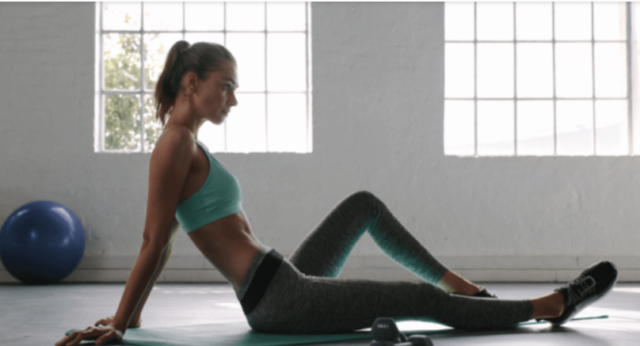Exercises for the knee joints

In this article, we tell you what effect gymnastics has on the knee joints, how to carry it out and under what conditions. At the end of the material you will find a useful poster.
Gymnastics for the joints of the legs is especially relevant for those who have suffered an injury or disease of the musculoskeletal system. It will help restore mobility and flexibility. And for healthy people with a sedentary lifestyle, exercises for the knee joints will help keep the body in good shape and avoid stretching or dislocation.
Indications and contraindications for gymnastics
As a rehabilitation, doctors recommend exercises for the knee joints to many patients. They will help in cases:
- Injuries: sprains, dislocations, fractures, damage to the meniscus;
- Arthritis – inflammation of the joint;
- Bursitis – inflammation of the articular bag;
- Periarthritis – inflammation of the tendons;
- Osteoporosis – demineralization of bones.
Of course, exercise therapy should be started only in the remission stage, when nothing threatens health, and you just need to restore the former mobility of the knees.
Exercise should be started only with the consent of the doctor. There are a lot of reasons why there is a pain in the knee joint. And if physical culture is included in the treatment program for some diseases, then for others it is completely contraindicated. Among them: infectious diseases (inflammation of the joints after an infection), neoplasms, and any inflammation in an acute form – with fever, swelling and redness.
The acute phase of any disease, a fresh injury is also a contraindication for performing exercises for the knee joints. You should be careful if you have diseases of the spine or damaged joints not only of the knees but of the whole body.
Rules for performing exercises for the knee joints
Wear loose-fitting clothing and comfortable athletic shoes for exercise. Lay a non-slip mat on the floor. This will ensure proper support on the legs and avoid accidental injuries.
Ventilate the room ahead of time, as occasional drafts can cause hypothermia in your knees and make your condition worse. Prepare equipment for exercises: for simple ones, you may need a chair, and for more complex exercises, dumbbells.
Remember that exercise should not cause pain. As soon as you feel discomfort, stop the gymnastics. If it’s too easy for you to do it, then try increasing the number of approaches, do two rounds of exercises in a row, increase the pace. And don’t forget to work both legs. Even if only one knee is damaged, the exercise should be performed symmetrically with both legs.
Training
The fact that for healthy people is a warm-up before gymnastics, for patients with sore knees it is a full-fledged exercise therapy.
Therefore, to warm up the muscles and ligaments before exercise, it is advisable to take a hot shower. It will not be superfluous to do a light foot massage in the direction from the feet to the hips. First, do each exercise two or three times with a small amplitude and at a slow pace, and then proceed to a full-fledged performance. The shower will warm up the muscles, and a smooth entry into the gym will help prepare the ligaments.
If you are healthy and just want to strengthen your joints, then as a warm-up, you can perform complexes for recovery from illnesses.